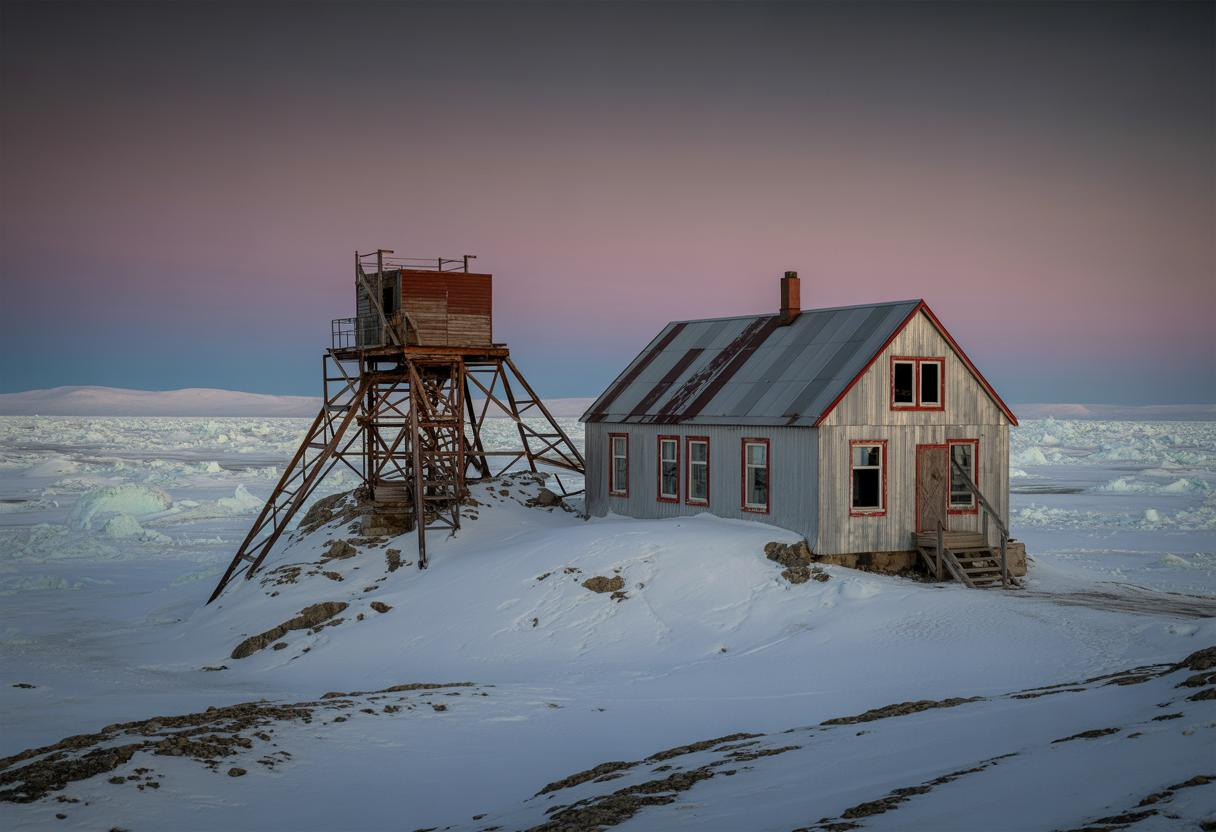Alaska’s most famous abandoned mining town is crumbling faster than experts expected, creating an unprecedented challenge that’s forcing preservationists to completely rethink how we save America’s industrial heritage. Kennecott Copper Mine, frozen in time since 1938, is now racing against permafrost thaw, ground subsidence, and extreme weather events that threaten to erase this $200 million piece of history forever.
The preservation paradox threatening America’s ghost towns
Kennecott faces what preservation experts call the “authenticity trap” – the more they restore it, the less authentic it becomes. Unlike California’s Bodie State Historic Park, which preserves buildings in “arrested decay,” Kennecott’s 14-story copper mill and mining structures require active intervention to prevent collapse.
The National Park Service has invested millions in stabilization work since 2022, but each restoration decision creates new dilemmas. Do you replace rotting wooden beams with identical materials that will decay again, or use modern alternatives that last longer but compromise historical integrity?
“We’re essentially performing surgery on a patient that’s supposed to look sick,” explains one NPS preservation specialist working on the 7,700-acre site.
Climate change is accelerating the countdown
Permafrost thaw destabilizes century-old foundations
Buildings erected on frozen ground in 1908 are now sinking as permafrost melts. Ground temperatures have risen 3-4 degrees Fahrenheit in the past decade, causing structural shifts that threaten the mill’s stability.
Similar to how extreme heat events affecting preservation sites across the American West are creating new challenges, Kennecott’s preservation team must now factor in accelerating climate impacts that weren’t anticipated when the site achieved National Historic Landmark status in 1986.
Geotechnical hazards multiply preservation costs
In 2024, geologists documented new ground subsidence near Bonanza Mine, where underground workings are collapsing. The site requires constant monitoring and updated safety protocols that strain already limited NPS budgets.
Environmental contamination from decades of copper mining adds another layer of complexity, with arsenic and copper residues requiring ongoing Superfund-level investigation.
Technology offers surprising solutions to ancient problems
Digital preservation reduces physical impact
3D scanning and virtual reality are revolutionizing how visitors experience fragile sites without contributing to their deterioration. Kennecott’s remote location makes this technology particularly valuable, allowing virtual “backcountry tours” that reduce foot traffic on unstable structures.
However, implementing these systems requires robust cybersecurity measures, especially given the increasing sophistication of threats to digital infrastructure. As recent analyses of cybersecurity considerations for digital preservation systems demonstrate, protecting cultural heritage data requires the same vigilance as protecting personal information.
Augmented reality transforms visitor understanding
AR overlays on smartphone apps can show visitors how the copper processing worked without requiring access to dangerous mill equipment. Offline solutions address connectivity challenges in Alaska’s wilderness, using solar-powered charging stations and pre-loaded content.
Economic models challenge traditional preservation funding
Kennecott’s tourism generates critical revenue for nearby McCarthy, but calculating true economic impact requires understanding multiplier effects that extend far beyond gate receipts.
The site’s economic model resembles strategies used by economic models for small remote communities, where unexpected revenue sources can sustain preservation efforts through innovative partnerships between public and private stakeholders.
Practical preservation strategies for the future
Phased restoration prioritizes critical structures
Risk-based prioritization focuses resources on structures with highest collapse probability while maintaining overall site integrity. The 14-story mill receives priority due to its iconic status and structural complexity.
Collaborative management balances competing interests
Private residents within the National Historic Landmark create unique challenges requiring negotiated access agreements and zoning protocols that protect both privacy and public access.
Lessons for America’s industrial heritage
Kennecott’s preservation challenges mirror those facing industrial sites nationwide, from Pennsylvania’s steel mills to Colorado’s mining camps. The strategies developed here will define how America preserves its industrial past in an era of accelerating climate change and evolving technology.
As visitor numbers grow and environmental pressures intensify, Kennecott serves as a testing ground for balancing authentic preservation with sustainable access – a model that could save dozens of similar sites across the American West.
